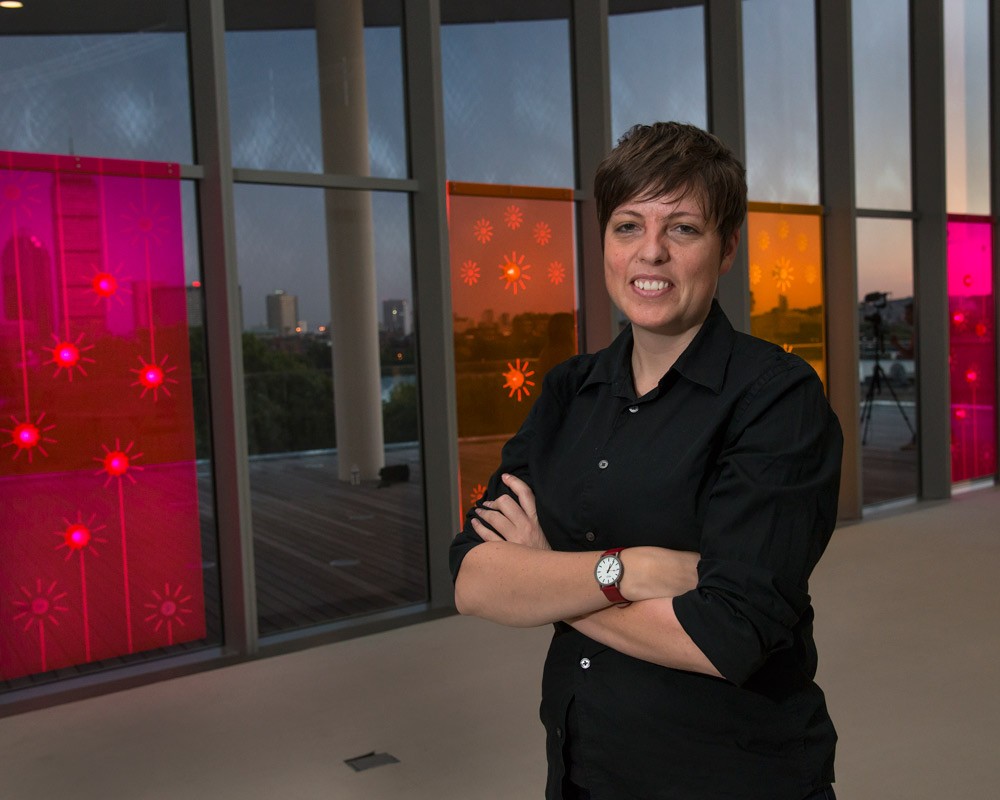In fall 2013, Little Sun was featured as a challenge in the first annual festival and hackathon, Hacking Arts, where Little Sun CEO Felix Hallwachs was on hand to present the project and mentor attendees. At Hacking Arts, 253 attendees heard from entrepreneurial leaders in a range of creative fields, caught demos from new start-ups, experienced tech-enabled live performances, and most importantly, dreamt up and actually produced their own tech-based ventures in the space of 48 hours.
“Our goals were to create a forum for artists and musicians to make connections with engineers and entrepreneurs and to spark new tech-based ideas in arts and entertainment. Ideas ranged from new ventures with commercial possibility to projects with purely artistic goals, but all were designed to move the creative industries forward through technology,” say the event’s co-chairs Catherine Halaby and Kathleen Stetson.
The challenge put forth to this group of burgeoning entrepreneurs, programmers, engineers and artists was this: How can you “hack” on Little Sun? How can you make the product even more affordable, efficient and appealing to a global audience?
The winning team, “Little Sun Community,” was comprised of students and one MIT staff member: Sonya Kovacic, Lenny Martinez, Rachel Osmundsen, Christina Sun, Lynda Tang and Maria Troein. The group created a platform to join on-grid and off-grid distributors and micro-entrepreneurs in a global online community. In their pitch delivered to Hacking Arts judges and audience members, the team said distributors could plot their sales on an interactive map, add to a Pinterest-like bulletin board, keep up with a newsfeed, create online profiles, coordinate local meetups, and post challenges. Similar to other digital platforms like Khan Academy and Behance, the site would employ “the principles of gamification” to offer sales incentives and help vendors track their progress towards the ultimate goal of delivering sustainable energy to off-grid communities. “The energy you get when you’re around a group of people with innovative ideas is amazing,” says Troien of the experience.
The Art of Social Engagement
The Little Sun Community idea was important because Little Sun is more than just a lamp; it’s also a social activity and a form of communal engagement. It is an object uniting people together in the shared goal of utilizing the earth’s important resources in a way that is kinder to both the planet and the people on it. In much the same way that Apple revolutionized the personal computer industry with its clean and seductive design, Little Sun offers people a fun and engaging way to light up their lives.
As the startup and social business builds distribution channels around the world, much of the lamp’s success is predicated on person-to-person interactions. Each method of distribution, as Hallwachs says, is tailor-made to the specific country, but many are based around personal pitches and door-to-door salesmanship. Like the Tupperware parties of the 1950s, Little Suns are often parceled out through networks of friends. In one instance, a woman named Constance Ntese, who worked as a cleaning woman at Cape Town’s Stevenson Gallery, began a side business selling the gallery’s lamps to members of her stokvel group, an invitation-only, member-run credit union. In one weekend she was able to sell more Little Suns than the gallery had sold in two months.
It is the goal of the project to spark new discussions, relationships and activities around issues of sustainable energy. While it might seem a stretch for a studio that has primarily produced large-scale art and architectural installations, Little Sun might be the ultimate architectural project, as Hallwachs says, because it is constructing the architecture of a global project — not building something “brick by brick” but bringing people, places and resources together for the common good. As both a social business and an art work, the Little Sun project strives to create real change in the world. “In the end it is about the doing,” Hallwachs says.




